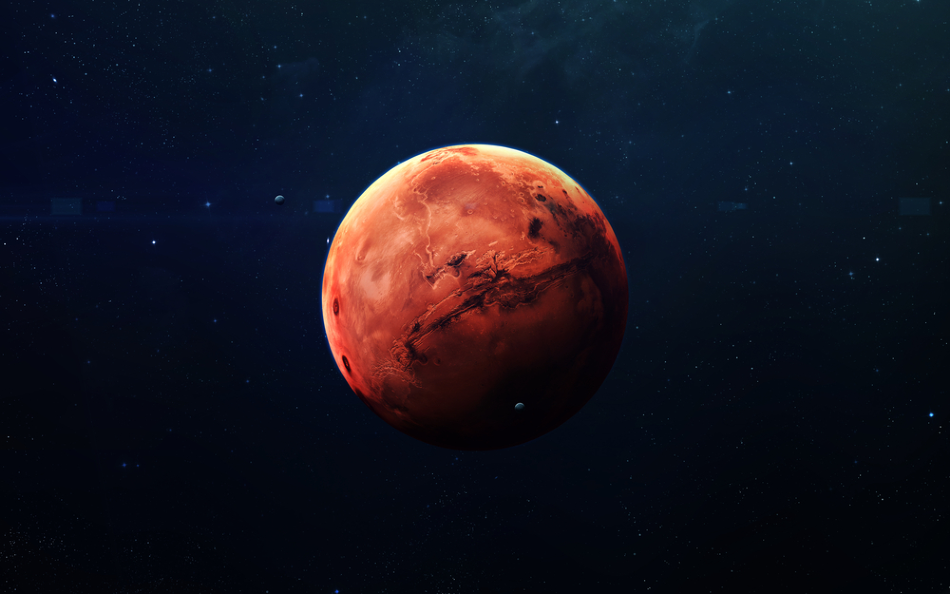
Image Credit: Vadim Sadovski/Shutterstock.com
The next stage of space exploration is all about sustainability. If manned missions to Mars are to succeed, a radical new material is needed to meet human needs in this harshest of environments. Chitin — a biomaterial ubiquitous on Earth — could provide such a substance.
As plans to send manned missions to Mars and possibly beyond develop, the revised aim of such endeavors is to enable longer-lasting visits to these alien vistas. Increased surface visits mean one thing: sustainability. Achieving sustainability in space will require exceptional and novel materials to meet human needs.
A new suggestion from the Singapore University of Technology and Design may take the prize for the strangest concept for a space-based material yet. A team of researchers from the university is championing the use of chitin to create tools and shelters for prolonged missions to Mars and beyond.
Chitin is one of the most common organic polymers on Earth, comprising the exoskeletons of anthropods such as insects and crustaceans, the scales of fish, and forming a primary component in the cell walls of fungi. It is second only to cellulose in its abundance, and seems to be the biological kingdom’s answer to the production of rigid structures. The team’s research, published in the journal PLoS ONE, suggests it could be just as useful for us off-world as it is for life on Earth.
The ubiquity of chitin and the fact that it is synthesized by so many living things across the biological kingdom means that it could be a key component in developing any artificial ecosystem. It also suggests that chitin-based materials could be relatively economical to produce. The researchers suggest that not only is chitin ubiquitous across Earth’s ecosystem, but it could also become just as common across any artificial ecosystem that we hope to establish off-world.
Chitin: Ready and Waiting in an Artificial Ecosystem
Many Martian manufacturing strategies for manned missions to Mars have so far relied on the capitalization of inorganic materials that are abundant on the Red Planet’s surface. While energy-efficient, this manufacturing system is based on strategies that work well on Earth, techniques that may not translate well to the surface of our nearest neighbor.
However, the researchers point out that nature has already provided a strategy to help life prosper in harsh conditions such as those early Mars explorers will face. Biological organisms face down hostile conditions by creating rigid structures — mixing inorganic material harvested from the environment, such as the materials abundant on Mars, within an organic matrix — chitin.
Insects, one of the most prolific producers of chitin, may already be present as part of a long-term Mars mission. Not only have insects been suggested as an efficient processor of agricultural and biological waste, but they could also provide an excellent source of protein, fulfilling the calorific needs of early Mars colonists. However, humans and our fellow vertebrates are not adapted to digest chitin well, which means that this biological material is already almost unavoidably going to be part of an artificial Mars ecosystem.
The question is - how best to extract and utilize chitin?
Find out more: Biomaterials testing equipment
Bringing Chitin Out of its Shell
Fernadez and his team used basic chemistry suitable for early Mars settlement to extract and manufacture a new material. The process not only requires minimal energy input but also eliminates the need for specialized manufacturing equipment.
This new material was created by taking chitosan — chitin in its most acetylated form — and dissolving it in low-concentration carbolic acid, a likely biological by-product created by aerobic and anaerobic fermentation in a basic artificial ecosystem. The simplified chemical process requires only water , which is available in the form of surface ice — sodium hydroxide and acetic acid. The process can be further simplified if the chitosan is extracted from fungi.
The chitosan was then mixed with a mineral designed to mimic Martian soil or biolith. The chitosan alone created transparent materials, not unlike plastics in mechanical characteristics and appearance. But when mixed with the faux Mars biolith, the amount of chitosan could be reduced and still produce a material with good mechanical properties suitable for general applications.
Amongst these applications, the study suggests the creation of basic tools — machine fabricated or hand-crafted — and machinery, as well as mortar for building purposes. To test the former, the team created a wrench from their material and used it to tighten a hexagonal bolt. While not as strong as a metallic tool, the chitin-based wrench could withstand an acceptable amount of torque, matching that required in non-critical space applications.
To demonstrate their material’s impressive building capabilities by using the mortar to repair a 12.5 mm diameter hole in a pipe, with a sealing effect that prevented leakage and sustained hydraulic pressure. The team also built a scaled-down shelter to demonstrate the material’s capability to provide humans make-shift dwellings on the Martian surface.
The authors conclude that the chitin-based material could be crucial to space sustainability and could provide a vital step in humanity’s journey to becoming a genuinely interplanetary species.
References and Further Reading
Shiwei N, Dritsas S., Fernandez, JG. (2020) Martian biolith: A bioinspired regolith composite for closed-loop extraterrestrial manufacturing. PLoS ONE 15(9): e0238606, https://doi.org/10.1371/journal.pone.023860
Disclaimer: The views expressed here are those of the author expressed in their private capacity and do not necessarily represent the views of AZoM.com Limited T/A AZoNetwork the owner and operator of this website. This disclaimer forms part of the Terms and conditions of use of this website.